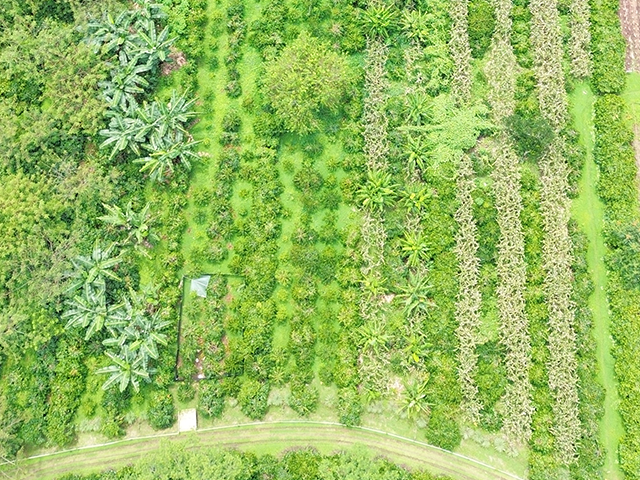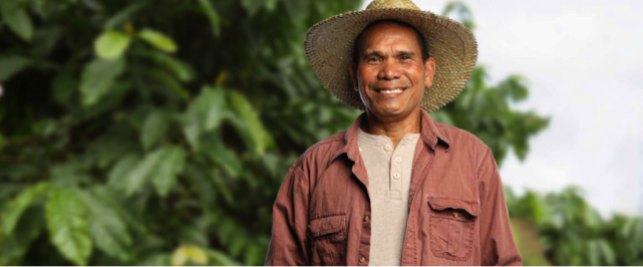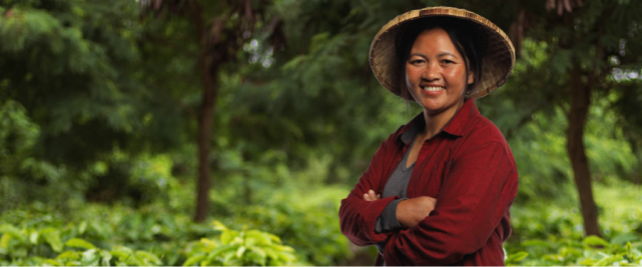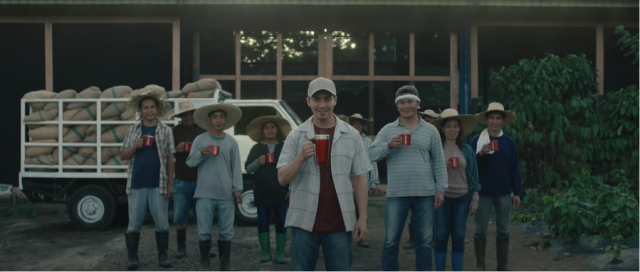Farming The Future of Coffee Growers

Coffee is life – as a lot of Filipinos would say. It serves as an energy booster, breakfast, or even a simple treat to some of us. Coffee’s role in the lives of most Filipinos can be condensed in a cup or two. For our farmers though, it’s a completely different story – coffee is their livelihood.
Leo Zambrano and Elizabeth Javier are two examples of farmers that depend on coffee for income. As they embarked on coffee training projects, they were able to successfully enhance their crops for the better, even at their age.
Their journey towards being coffee production experts highlights the importance of giving the right farming knowledge to the current and next generation of farmers. Have a look at how they use coffee farming as a means of providing and inspiring:
From Farmer to Ambassador
Smiling amongst sari-sari and supermarket shelves all over the country is Leo Zambrano who represents the success coffee farmers can achieve.

For over 37 years, Leo has turned to farming to provide for his family. In 2018, he was chosen as a participant of Project Coffee++, an initiative that seeks to increase the yields and incomes of 1,500 farmers in Bukidnon and Sultan Kudarat. In over three years, the project already helped triple Leo’s profits.
As a Project Coffee++ Coffee Ambassador, Leo teaches his fellow farmers how to harvest and expand their produce better. “At ipinagmamalaki ko na ako ay magsasakang Pilipino na nangangalaga ng kapeng Pilipino para sa kapwa ko Pilipino. (I’m proud to be a Filipino farmer growing Filipino coffee for fellow Filipinos.)” He says.
Farmer turned Coffee Production Expert
As a single mother that tends to an integrated farm filled with both coffee and cash crops, Elizabeth is considered to be a leader and a role model. To further help herself and her community, she explored any available program that aids farmers like herself.

Elizabeth has attended courses like the Good Agricultural Practice for Coffee and Common Code for the Coffee Community (4C) to expand her own farm and to teach others how to do the same.
“Ipinagmamalaki ko na magsasaka ako,” said Elizabeth. “Misyon ko ang makatulong sa kapwa ko magsasaka kaya binabahagi ko ang kaalaman ko sa pagkakape. (I am proud to be a farmer. I’ve made it my mission to help my fellow farmers by teaching them everything I know about coffee production.)”

As long-standing partners of our local coffee farmers, Nescafé continues to promote sustainable and profitable livelihood for them. The Nescafé Plan, in cooperation with the German development agency, GIZ, created initiatives like the Project Coffee++ to train farmers in many ways. One of the many skills they teach is Regenerative Agriculture, a method of farming that helps farmers care better for the soil they tend. They also help educate them on business and marketing to help increase their profits.
Leo and Elizabeth are proof that with the right training, coffee farmers can maximize their skills to produce better coffee for the country – enough to increase the Philippines’ coffee self-sufficiency rate, which is only at 27%, according to the Philippine Statistics Authority’s 2020 study on self-sufficiency in our agricultural industry.
However, Coffee farmers are not getting any younger. The average age of a Filipino coffee farmer is 57, according to a study about the ageing generation of farmers. To ensure a strong future for coffee production in the Philippines, investing in the next generation of farmers is a must.
To celebrate this year’s International Coffee Day, Nescafé launched Kape’t Bisig- a campaign with a mission to provide a 10M-peso educational assistance fund for the children of Filipino coffee farmers. Social media users can also participate in the initiative by joining the Kape’t Bisig music challenge, with each song and dance shared contributing in raising awareness and empowering the future of coffee farming. To learn more about this project, click here.




